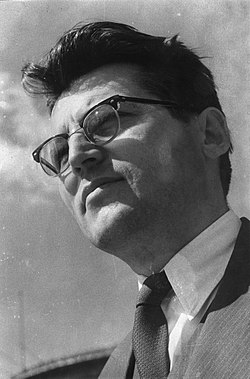| President of Serbia and Montenegro | |
|---|---|
| Предс(ј)едник Србије и Црне Горе Preds(j)ednik Srbije i Crne Gore | |
 Standard of the President | |
| Residence | White Palace,Belgrade |
| Precursor | President of the Presidency of Yugoslavia |
| Formation | 15 June 1992; 33 years ago (1992-06-15) |
| First holder | Dobrica Ćosić |
| Final holder | Svetozar Marović |
| Abolished | 3 June 2006; 19 years ago (2006-06-03) |
| Superseded by | President of Serbia President of Montenegro |
Thepresident of Serbia and Montenegro (Serbian:Предс(ј)едник Србије и Црне Горе,romanized: Preds(j)ednik Srbije i Crne Gore) was thehead of state ofSerbia and Montenegro. From its establishment in 1992 until 2003, when the country wasreconstituted as a confederacy (state union) via constitutional reform, the head of state was known as thepresident of the Federal Republic of Yugoslavia (Serbian:Предс(ј)едник Савезне Републике Југославије,romanized: Preds(j)ednik Savezne Republike Jugoslavije). With theconstitutional reforms of 2003 and the merging of the offices ofhead of government and head of state, the full title of the president wasPresident of Serbia and Montenegro andChairman of the Council of Ministers of Serbia and Montenegro (Serbian:Предс(ј)едник Србије и Црне Горе / Предс(ј)едник Сав(ј)ета министара Србије и Црне Горе). In 2006 the office was abolished as the state union was dissolved, withSerbia andMontenegro becoming independent countries.
As head of state, the president had the power to
In 2003, the powers of the president were extended to include the right to chair the Council of Ministers and propose the composition of the Council of Ministers to the parliament, effectively merging the powers of the head of government into the office. However, although the president becamede jure bothhead of state andhead of government, his role was largely limited because all the institutions were indirectly elected by confederal parliament, which was itself elected by parliaments of member states.
Under the1992 constitution, the president was elected by theFederal Assembly of Yugoslavia for a four-year term. After the constitutional amendments of 2000, direct elections for the office of President were introduced. Under the2003 constitution, the president was elected at the proposal of the president and vice president of theParliament of Serbia and Montenegro for a four-year term. The president of Serbia and Montenegro was a member of the Supreme Defence Council together with thepresident of Serbia and thepresident of Montenegro.
The results of the direct presidential elections of 2000 were as follows:
| Candidate | Party | 28 September figures | 10 October figures | |||
|---|---|---|---|---|---|---|
| Votes | % | Votes | % | |||
| Vojislav Koštunica | Democratic Opposition of Serbia | 2,474,392 | 50.38 | 2,470,304 | 51.71 | |
| Slobodan Milošević | SPS–JUL–SNP | 1,951,761 | 39.74 | 1,826,799 | 38.24 | |
| Tomislav Nikolić | Serbian Radical Party | 292,759 | 5.96 | 289,013 | 6.05 | |
| Vojislav Mihailović | Serbian Renewal Movement | 146,585 | 2.98 | 145,019 | 3.04 | |
| Miodrag Vidojković | Affirmative Party | 46,421 | 0.95 | 45,964 | 0.96 | |
| Total | 4,911,918 | 100.00 | 4,777,099 | 100.00 | ||
| Valid votes | 4,911,918 | 97.32 | 4,777,099 | 97.19 | ||
| Invalid/blank votes | 135,371 | 2.68 | 137,991 | 2.81 | ||
| Total votes | 5,047,289 | 100.00 | 4,915,090 | 100.00 | ||
| Registered voters/turnout | 7,249,831 | 69.62 | 6,871,595 | 71.53 | ||
| Source:CESID,IFES | ||||||
There were six presidents of FR Yugoslavia (two acting) after its assertion of independence from theSocialist Federal Republic of Yugoslavia (SFRY) in 1992 up until its dissolution in 2003.Svetozar Marović of theDemocratic Party of Socialists of Montenegro was the only President of the FR Yugoslavia after its constitutional reforms and reconstitution as a confederacy. He was inaugurated on March 7, 2003. After the declaration of independence ofMontenegro, on June 3, 2006, the president announced on June 4, 2006 the termination of his office.[1]
| No. | Portrait | Name (Birth–Death) | Representing | Term of office | Party | Notes | ||
|---|---|---|---|---|---|---|---|---|
| Took office | Left office | Time in office | ||||||
| Presidents of the Federal Republic of Yugoslavia 1992–2003 | ||||||||
| 1 |  | Dobrica Ćosić Добрица Ћосић (1921–2014) | Serbia | 15 June 1992 | 1 June 1993 | 351 days | Independent | |
| N/A |  | Miloš Radulović Милош Радуловић (1929–2017) | Montenegro | 1 June 1993 | 25 June 1993 | 24 days | Democratic Party of Socialists of Montenegro | Acting president. |
| 2 |  | Zoran Lilić Зоран Лилић (born 1953) | Serbia | 25 June 1993 | 25 June 1997 | 4 years | Socialist Party of Serbia | |
| N/A |  | Srđa Božović Срђа Божовић (born 1955) | Montenegro | 25 June 1997 | 23 July 1997 | 28 days | Democratic Party of Socialists of Montenegro | Acting president. |
| 3 |  | Slobodan Milošević Слободан Милошевић (1941–2006) | Serbia | 23 July 1997 | 7 October 2000 | 3 years, 76 days | Socialist Party of Serbia | Forced to step down in theBulldozer Revolution. |
| 4 |  | Vojislav Koštunica Војислав Коштуница (born 1944) | Serbia | 7 October 2000 | 7 March 2003 | 2 years, 151 days | Democratic Party of Serbia | The only president elected indirect election. |
| President of the State Union of Serbia and Montenegro 2003–2006 | ||||||||
| 5 |  | Svetozar Marović Светозар Маровић (born 1955) | Montenegro | 7 March 2003 | 3 June 2006 | 3 years, 88 days | Democratic Party of Socialists of Montenegro | Also head of government asChairman of the Council of Ministers of Serbia and Montenegro (offices merged). |
